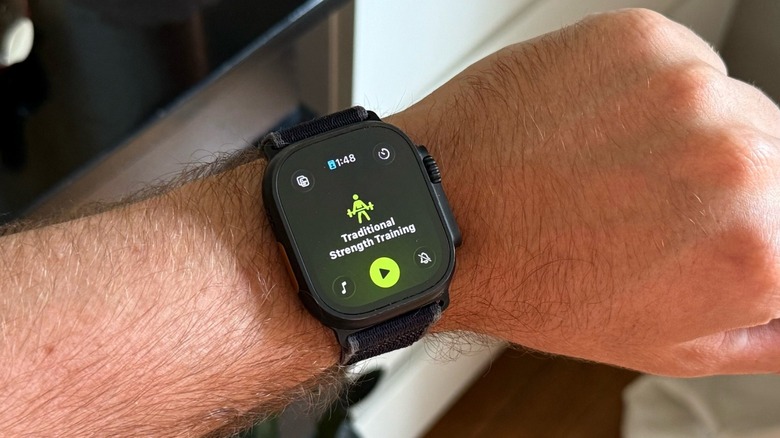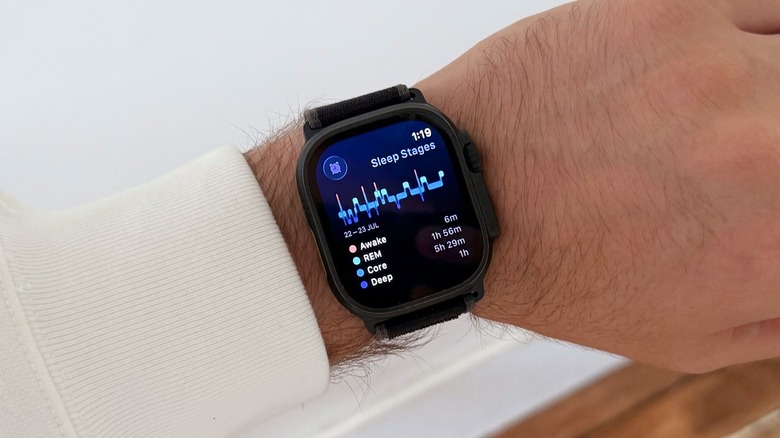Technology
Future of the Game Showcase returns at MLS All-Star Game
MLS will again hold its Future of the Game Showcase during All-Star Week this summer, hosting technology demos on July 22 and 23 at Q2 Stadium. The showcase debuted last year and is a tentpole of the league’s ongoing tech-forward strategy. Of the eight companies scheduled to participate, six are startups who took part in […]
MLS will again hold its Future of the Game Showcase during All-Star Week this summer, hosting technology demos on July 22 and 23 at Q2 Stadium. The showcase debuted last year and is a tentpole of the league’s ongoing tech-forward strategy.
Of the eight companies scheduled to participate, six are startups who took part in either the first or second cohort of the MLS Innovation Lab, the league’s incubation program to pilot emerging tech products.
The MLS Next All-Star contest will feature three pieces of technology, with data on the pitch transmitted in real-time to the showcase. No single player will wear more than one, but groups of players will have:
- Oliver Sports soccer-specific GPS trackers.
- Soccerment smart shin guards providing performance data.
- Lubu Technologies smart insoles to track ground forces and movement.
Also participating will be:
- Edge Sound Research: Live immersive sound product.
- Wicket: Facial recognition technology.
- Camb.ai: AI translation of the match in multiple languages.
- Sportec Solutions: MLS data partner to demo its AI Live Ticker and Data Story Finder with storytelling and visualizations for fan engagement.
- OneCourt: Tactile tablet helping blind and low vision fans track the game through vibrations.
Technology
Tech company headquarters in San Jose is bought at a price discount
SAN JOSE — FH One Investments, acting through an affiliate, bought the Synaptics headquarters campus for $29.5 million, according to documents filed Thursday at the Santa Clara County Recorder’s Office. Located at 1109 and 1151 McKay Ave. in North San Jose, the property’s most recently reported assessed value was $34 million. “Our investment philosophy centers […]

SAN JOSE — FH One Investments, acting through an affiliate, bought the Synaptics headquarters campus for $29.5 million, according to documents filed Thursday at the Santa Clara County Recorder’s Office.
Located at 1109 and 1151 McKay Ave. in North San Jose, the property’s most recently reported assessed value was $34 million.
“Our investment philosophy centers on acquiring unique assets when market conditions create attractive entry points,” said Daria Hosseinyoun, president of FH One Investments, which is based in Sausalito.
In a further attractive component of the deal, Synaptics is remaining as a tenant in the building, which totals 111,000 square feet. Newmark, a commercial real estate firm, arranged the property purchase.
“Given its long-term lease, we are able to take a long-term view and acquire an irreplaceable property at valuations that will prove compelling as the technology sector continues to evolve,” Hosseinyoun said.
Slumping property values can unleash effects that extend beyond the balance sheets of real estate owners. Property taxes provide a vital revenue stream for many public agencies.
However, weaker values can attract investors such as FH One that can then seek lower rents. The lower rents could in turn entice tenants, bringing jobs into a city.
FH One has been busy in recent weeks buying office buildings at attractive prices.
In mid-June, an FH One affiliate paid $13 million for a Concord office building that totals 174,000 square feet.
FH One appears to be pursuing a classic buy low and sell high strategy.
“This acquisition, along with our recent Concord purchase, reflects our belief that now is the optimal time to secure premium assets that will benefit from the inevitable market recovery,” Housseinyuon said. “We’re building a portfolio of irreplaceable properties that technology companies will always need.”
Originally Published:
Technology
Google’s new AI feature lets you virtually try on clothes
Google announced on Thursday that it’s launching a new AI feature that lets users virtually try on clothes. The tech giant is also rolling out updated price alerts and teased an upcoming feature that will let users explore shoppable outfits and room inspiration using generative imagery. The official launch of the virtual try-on feature comes […]

Google announced on Thursday that it’s launching a new AI feature that lets users virtually try on clothes. The tech giant is also rolling out updated price alerts and teased an upcoming feature that will let users explore shoppable outfits and room inspiration using generative imagery.
The official launch of the virtual try-on feature comes two months after Google began testing it. The feature works by allowing users to upload a photo of themselves to virtually try on a piece of clothing.
The feature is launching in the United States today, letting users try on apparel items in Google’s Shopping Graph across Search, Google Shopping, and product results on Google Images.
To use the feature, users need to tap on a product listing or apparel product result and select the “try it on” icon. From there, they need to upload a full-length photo of themselves. They will then be able to see what they might look like wearing the clothing. Users can save looks and share them with friends as well.

While Google has offered virtual try-on technology before, the earlier features focused on showing items on a diverse range of models’ bodies. With this new feature, the company is letting users try clothes on a virtual version of their own body.
The launch comes as Google has been investing in the virtual try-on space. Last month, the tech giant launched an experimental app called Doppl that uses AI to visualize how different outfits might look on you.
A Google spokesperson told TechCrunch that while both the new try-on feature and Doppl are powered by the same generative AI technology, the app is designed for shoppers to go even deeper with virtual try-on to allow them to curate their personal style. Plus, Doppl can create AI-generated videos so users can get a better sense of how the outfit would look on them in real life.
Techcrunch event
San Francisco
|
October 27-29, 2025
As for the new price alerts, users can now specify the amount they want to spend on an item. Starting today, shoppers in the United States can set an alert for a product and specify their preferred size and color, as well as the price they want to pay.

“The Shopping Graph has products and prices from all across the web — so we’ll let you know when there’s an offer that meets your criteria,” said Danielle Buckley, Google’s director of Consumer Shopping, in a blog post. “No more constantly checking to see if that bag you’re eyeing is finally at the right price for you or forgetting to come back to a product you loved.”
In terms of the upcoming feature for outfit and room design inspiration, Google says users will get access to it this fall. It will let users do things like get style inspo for a green flowy dress for a garden party or design ideas for a bedroom.
The tech giant says its vision match technology will generate a range of visual options for the query and use the 50 billion products in the Shopping Graph to show product listings for visual matches.
Technology
When sports stats become the real-life superpower
Sports stats used to be just trivia for die-hard fans and coaches scribbling in notebooks. Now, they’re at the heart of every smart decision in the game—on the field, in fantasy leagues, and even at the betting window. The shift has been dramatic. Athletes and coaches fine-tune strategies using detailed analytics. Bettors leverage performance data […]

Sports stats used to be just trivia for die-hard fans and coaches scribbling in notebooks. Now, they’re at the heart of every smart decision in the game—on the field, in fantasy leagues, and even at the betting window.
The shift has been dramatic. Athletes and coaches fine-tune strategies using detailed analytics. Bettors leverage performance data to improve their odds. Even casual fans get a front-row seat to insights once reserved for insiders.
This article looks at how sports statistics have evolved into a genuine superpower, fueling sharper performance, deeper engagement, and a new era of transparency across the sports world.
Unlocking the power of sports data
Sports data is no longer reserved for analysts or pro teams. Today, everyone from fantasy league regulars to serious bettors can tap into a wealth of stats that were once out of reach.
What’s really changed is how accessible and actionable this information has become. Platforms now deliver verified insights, real-time analytics, and detailed records on athletes, teams, and even tipsters. This lets everyday fans make smarter choices—whether they’re setting a fantasy lineup or placing their first wager.
If you’ve ever wondered how some people always seem one step ahead in office pools or why certain bettors consistently win, it usually comes down to their ability to read and interpret data. No more gut feelings or guesswork—stats are fueling smarter strategies and raising the bar for everyone involved.
For those looking to move beyond casual fandom, there’s a new breed of tools designed for transparency and accountability. To see these data-driven resources in action—and learn how verified performance records can help you bet smarter—click here.
How athletes and coaches use stats for a competitive edge
Elite teams no longer leave performance up to chance. Analytics now drive every training session, lineup, and on-field adjustment.
For coaches and athletes at the highest level, stats aren’t background noise—they’re the foundation of smarter preparation and better results. One well-timed insight can separate a good season from a great one.
From personal bests to team dynamics, today’s sports pros treat data as their secret advantage. Let’s look at how they put it to work.
Performance metrics that matter
The best athletes focus on what’s measurable. Tracking speed, agility, shooting percentage, or pass accuracy helps them spot progress—and identify plateaus before they become problems.
These numbers aren’t just for post-game recaps. They shape practice plans, reveal hidden strengths, and highlight where efficiency can be gained. A runner might discover their fastest sprints happen late in a session; a basketball player could see that shot selection is far more accurate from one wing than the other.
By zeroing in on these key indicators, coaches set clear goals and tailor drills for real-world improvement. Over time, even small upticks in these stats translate into noticeable advantages on game day.
Injury prevention and recovery analytics
No athlete wants to spend time sidelined. That’s why teams are turning to data-driven monitoring of workload, biomechanics, and recovery patterns to cut down risk.
A 2024 study of elite Turkish handball teams highlights how analytics are used to track and address injury incidence throughout the season. By using real-time data, teams can better prevent injuries and adapt their training approaches to boost athlete safety and recovery (Injury Analysis Elite Handball).
This approach isn’t limited to pros—college programs and youth leagues are following suit. With tech like GPS trackers or force plates in shoes, it’s now possible to detect subtle signs of fatigue or overload before they turn into serious issues.
Opponent analysis and game planning
No two opponents play the same way—and that’s where detailed statistical breakdowns come in handy. Coaches pore over data on shot charts, set piece tendencies, or possession patterns to anticipate what’s coming next.
This intel helps teams fine-tune strategy down to individual matchups. For example: If an opponent scores most goals from crosses on the left side, defenders know exactly where to tighten up coverage.
The result? Smarter pre-game prep and more confident adjustments mid-match. By making sense of trends that used to slip by unnoticed, coaches give their teams every possible edge when it counts most.
The fan’s superpower: data-enhanced engagement
Fans are no longer just spectators—they’re becoming savvy insiders, armed with stats that shape every decision and debate.
Whether it’s picking a fantasy team, joining a heated online forum, or placing a well-researched wager, access to quality data has changed how we connect with sports.
What I’ve noticed is that fans now treat game-day like a puzzle, using real numbers to spot hidden value and even predict upsets before they happen.
This shift is turning casual viewing into an active, competitive experience—and making the journey just as exciting as the result.
Fantasy leagues and stat-based competition
Fantasy sports have raised the bar for everyone who loves stats. Winning isn’t luck—it’s about knowing which metrics matter most for each player or match-up.
I’ve seen office pools where participants debate over advanced analytics instead of gut feelings. Things like usage rates, expected goals, or efficiency ratings aren’t just for analysts—they’re everyday tools for millions of fantasy managers.
This focus on data-driven picks keeps leagues fresh and competitive. It rewards those who do their homework and aren’t afraid to challenge conventional wisdom with numbers that tell the real story.
Social sharing and community insights
The social side of sports stats has exploded. Fans gather in online communities to share graphs, argue about trends, and swap predictions based on real-time data.
PewC’s Global Sports Survey 2024 reports a surge in these communities built around data analysis. Industry leaders say this trend is fueling loyalty and deeper collaboration among fans across different platforms.
I’ve joined discussions where someone’s obscure stat changes everyone’s perspective on an upcoming match. The camaraderie—and competition—make following sports feel less solitary and more connected than ever before.
Responsible betting with verified stats
Bettors have wised up. Access to verified performance records means people can move beyond guesswork when putting money on the line.
The best platforms now show detailed win-loss records, profit margins, or yield percentages—taking much of the mystery out of picking a trusted tipster or making your own picks based on transparent history rather than hype.
This transparency helps bettors make more responsible choices and encourages a culture where both fun and accountability matter. Instead of chasing hot streaks or rumors, fans are basing decisions on data they can actually trust.
The future: data as the ultimate sports equalizer
Sports data has moved far beyond simple box scores and basic averages. Today, it’s the great equalizer—giving every competitor, coach, and fan access to insights that once belonged only to big-budget teams or professional scouts.
As technology becomes more accessible, even underdogs can harness analytics to challenge traditional powerhouses. Whether you’re tracking a youth soccer player’s progress or making predictions as a die-hard fan, data is opening doors for everyone.
The next generation of innovation—driven by artificial intelligence and wearable tech—promises tools that will reshape how we play, watch, and understand sports. The playing field has never been more level or more exciting.
AI and predictive analytics in sports
Artificial intelligence is quickly becoming a game-changer across the sports world. Machine learning models now analyze thousands of variables to predict outcomes with striking accuracy—whether it’s who might win a tennis match or which basketball team is primed for an upset.
This goes way beyond odds-making. Teams use predictive analytics for scouting new talent and planning lineups. Fans see personalized content based on their viewing habits or fantasy interests. Even casual viewers get smarter recommendations about what games to watch and which players to follow.
I’ve noticed how some clubs use AI-driven insights during matches for quick tactical adjustments—something unheard of just a few years ago. As these systems grow more advanced, they’ll help everyone make sharper decisions both on and off the field.
Wearables, sensors, and real-time insights
If you’ve seen players wearing smartwatches or chest straps during training, you’ve glimpsed the power of wearable tech in action. Sensors now track heart rate, sprint speed, jump height—even hydration levels—in real time.
This isn’t just about performance stats; it’s also reshaping injury prevention and recovery. A 2025 industry report from Catapult (Key Trends in Sports 2025) details how wearables provide instant feedback that helps athletes train smarter—not just harder—and spot early warning signs before small issues turn into injuries.
Fans benefit too. Imagine receiving live updates on your favorite player’s fitness during a match or seeing interactive stats right on your phone at the stadium. This blend of technology and insight makes the entire experience more immersive for everyone involved.
Conclusion
Sports stats are no longer just for analysts or hardcore fans—they’re shaping how everyone experiences the game.
Whether you’re a coach fine-tuning strategy, a bettor hunting for an edge, or a fan looking to outsmart your rivals, data is your superpower.
The trend is clear: as access to quality stats and insights keeps expanding, the benefits reach further across all levels of sport.
If there’s one thing I’ve seen firsthand, it’s that the smartest decisions come from facts, not hunches.
Do You Want to Know More?
Technology
Ex-College Hoops Star Secures $500K for AI Basketball Platform
by Jeroslyn JoVonn July 24, 2025 Meet Nyla Pollard, former college athlete and founder & CEO of the game-changing AI platform, Ballin AI. A former college athlete-turned-entrepreneur is celebrating the $500,000 angel round she recently closed for her groundbreaking sports tech company. On July 23, Nyla Pollard, a College of William & Mary alum and […]


by Jeroslyn JoVonn
July 24, 2025
Meet Nyla Pollard, former college athlete and founder & CEO of the game-changing AI platform, Ballin AI.
A former college athlete-turned-entrepreneur is celebrating the $500,000 angel round she recently closed for her groundbreaking sports tech company.
On July 23, Nyla Pollard, a College of William & Mary alum and former standout defender on the women’s basketball team, announced on LinkedIn that she officially closed a $500K angel round for her AI-powered sports platform, Ballin AI. The startup utilizes artificial intelligence to help players and coaches refine their skills and enhance team performance, ultimately transforming how athletes train, play, and get recruited.
“We’re backed by an incredible group of early believers fueling our mission: to make recruiting faster, smarter, and data-driven for both athletes and coaches,” Pollard wrote.
Pollard developed the concept for Ballin AI after graduation, drawing inspiration from her own college recruitment journey, which sparked the idea.
“I remember reflecting on my own recruiting process and thinking, ‘Oh, this could be better,’” she told her alma mater in January. “But I didn’t really start working on it until November of 2022, and we formally incorporated our company in 2023.”
“Really, it came from having that firsthand experience as an athlete,” she added. “My initial idea was to focus on the recruiting process and how to make that better for coaches and players. Then, when we dove into customer discovery and market research, we really landed on the right solution for right now.”
Launched earlier this year, Ballin AI automates game film analysis for coaches and players at every level. Users simply upload their footage, and the platform generates detailed reports tailored to their needs.
Coaches can use it for recruiting, player evaluation, and scouting opponents, while players get insights to sharpen their skills and boost their visibility to recruiters and scouts. Now with a staff of 13, including former William & Mary Tribe players, Bianca Boggs and Dani McTeer, Ballin AI is looking to transform the future of sports recruiting.
“Because we are an AI-powered platform, it allows us to deliver with unprecedented speed,” Pollard said. “When you think about it, we’re adding automation to processes that were formerly manual and laborious.”
Besides breaking barriers as a Black woman in sports tech, Pollard is also making waves as a college athlete turned entrepreneur. Last December, she spoke to current student-athletes at her alma mater, inspiring them with her journey and passion for innovating the sports industry.
“In my experience as a student athlete, we would have post-graduate conversations, and the presented options were always Corporate America, grad school or playing overseas,” she said. “Entrepreneurship was never discussed as a viable career path. I never even considered doing that.”
Pollard continued. “Athletes have such a unique yet untapped perspective in the world of sports innovation. Former athlete founders do exist, but I think there should be more because no one knows the space like we do. Even after we started Ballin, I got the question so many times: ‘Why doesn’t this exist already?’”
RELATED CONTENT: TikTok-Fueled Boycott Exposes Deep Divide Between Black Americans and Africans; It’s Time To Knock It Off
Technology
watchOS 26 Public Beta Now Available With Your New AI Fitness Coach
José Adorno for BGR Following a month of beta testing, Apple is now releasing the first watchOS 26 public beta to Apple Watch users. Unlike other test versions, you should really think twice before downloading this update, as Apple doesn’t offer a way for users to downgrade […]

Following a month of beta testing, Apple is now releasing the first watchOS 26 public beta to Apple Watch users. Unlike other test versions, you should really think twice before downloading this update, as Apple doesn’t offer a way for users to downgrade to a more stable version.
With that in mind, if you’re planning to try the watchOS 26 public beta ahead of the fall release, you should be aware that you need to keep your iPhone and Apple Watch running the betas until the stable version is available.
That said, the best feature you should try in watchOS 26’s public beta is the new AI fitness coach called Workout Buddy. This is one of the Apple Intelligence features coming to your Apple Watch in a few months. But don’t forget that you’ll need to have newer Apple Watch and iPhone models to use it, such as an Apple Watch Series 9 and an iPhone 15 Pro.
Workout Buddy is great, but there’s even more in watchOS 26
This Apple Intelligence-powered functionality “generates personalized pep talks using voice data from an Apple Fitness+ trainer.” Apple explains that Workout Buddy helps “set the mood for your workout,” as it encourages you based on the data available in the Health app, which means you can get an extra push during your workout based on what you already do.
Speaking of AI improvements, the Smart Stack got even better. The next time you go to the gym, you might see your workout suggestion there. Also, if you lose cellular connection, the Apple Watch will start registering your location so you can know where to go.
With watchOS 26 public beta 1, Apple is also expanding the Liquid Glass design to the Apple Watch. Even though it’s more subtle than the UI revamps available in iOS 26, iPadOS 26, and macOS Tahoe, Apple Watch users will find a revamped Photos Watch Face, Control Center, Lock Screen, and more. There’s also a new gesture to learn in watchOS 26. According to Apple, new Apple Watch models let you do a wrist flick. By turning your wrist over and then back, you can dismiss a notification or a call and go back to your Watch Face.
Alongside watchOS 26 public beta 1, Apple also released the first public test versions of iOS 26, iPadOS 26, macOS Tahoe, and tvOS 26.
Technology
Bank Smart, Stay Safe: Spotting Scams in a Digital World | News, Sports, Jobs
Consumers need to be aware of potential online banking and financial scams. In today’s interconnected world, staying vigilant against digital scams is more crucial than ever, especially for seniors who may be targeted due to perceived vulnerabilities. Understanding common scam tactics can empower you to protect your personal and financial information. 1. The “Account Suspension” […]


Consumers need to be aware of potential online banking and financial scams.
In today’s interconnected world, staying vigilant against digital scams is more crucial than ever, especially for seniors who may be targeted due to perceived vulnerabilities. Understanding common scam tactics can empower you to protect your personal and financial information.
1. The “Account Suspension” Alert
You might receive an email or phone call claiming your bank or online account has been suspended due to suspicious activity. The message urges you to click a link or provide personal information to reactivate your account.
Stay Safe: Legitimate institutions will never ask for sensitive information via email or unsolicited calls. If in doubt, contact your bank directly using official contact details.
2. The “Debt Collection” Threat
Scammers may call, asserting you owe money and face legal action if you don’t pay immediately. They often use high-pressure tactics to instill fear.
Stay Safe: Verify any debt claims by contacting the creditor directly. Never provide payment or personal information to unsolicited callers.
3. The “Tech Support” Trick
An unexpected call or pop-up message claims your computer has a virus. The scammer offers to fix the issue remotely, requesting access to your device and payment.
Stay Safe: Reputable tech companies do not make unsolicited support calls. If you receive such a call, hang up immediately.
4. The “Grandchild in Trouble” Plea
You receive a call from someone claiming to be your grandchild, stating they’re in trouble and need money urgently. The caller may plead for secrecy.
Stay Safe: Always verify the caller’s identity by asking questions only your real grandchild would know. Contact other family members to confirm the situation before taking any action.
5. The “Too Good to Be True” Offer
An email or message informs you of a lottery win or inheritance, requiring you to pay a fee to claim the prize.
Stay Safe: If it sounds too good to be true, it probably is. Never send money or personal information to claim a prize you didn’t enter to win.
Protecting Yourself
• Be Skeptical: Always question unsolicited communications, especially those requesting personal or financial information.
• Verify Sources: Contact organizations directly using official channels to confirm any claims.
• Secure Your Information: Never share passwords, Social Security numbers, or bank details with unknown parties.
• Report Scams: If you suspect a scam, report it to local authorities or the Federal Trade Commission at ftc.gov.
Staying informed and cautious can help you navigate the digital landscape safely. Remember, it’s always okay to say no and seek advice when something doesn’t feel right.
-

 College Sports2 weeks ago
College Sports2 weeks agoWhy a rising mid-major power with an NCAA Tournament team opted out of revenue-sharing — and advertised it
-

 Sports2 weeks ago
Sports2 weeks agoNew 'Bosch' spin
-

 Fashion1 week ago
Fashion1 week agoEA Sports College Football 26 review – They got us in the first half, not gonna lie
-

 Sports1 week ago
Sports1 week agoVolleyball Releases 2025 Schedule – Niagara University Athletics
-

 College Sports3 weeks ago
College Sports3 weeks agoMSU Hockey News – The Only Colors
-

 Sports3 weeks ago
Sports3 weeks agoE.l.f Cosmetics Builds Sports Marketing Game Plan Toward Bigger Goals
-

 Health2 weeks ago
Health2 weeks agoCAREGD Trademark Hits the Streets for Mental Health Month
-

 College Sports2 weeks ago
College Sports2 weeks agoBuford DB Tyriq Green Commits to Georgia
-

 Youtube2 weeks ago
Youtube2 weeks agoWill LeBron James request a trade? 🤔 Windy says MULTIPLE TEAMS would make offers 👀 | NBA Today
-

 Youtube2 weeks ago
Youtube2 weeks agoWill Giannis DEPART Milwaukee⁉️ + How signing Turner & waiving Dame impacts the Bucks | NBA Today






























